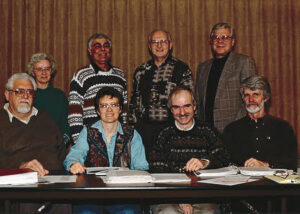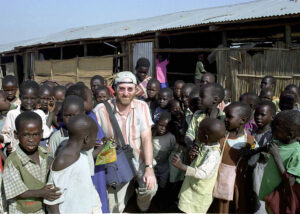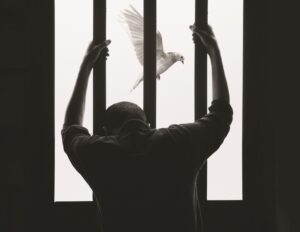A year ago I asked my oldest daughter, who was in the middle of a master of physiotherapy program at the University of Manitoba, to help me figure out what was wrong with my left foot. Her assessment was, “Dad, you are messed up. Make an appointment to see a physiotherapist.”
I dutifully went. It turned out that, while I re-shingled my roof the previous summer, I put one of my lower vertebrae out, so that it was pinching a nerve that ran down to my foot. Something in my lower back was messing up the function of one of my limbs. The remedy? Core exercises to stretch, twist and strengthen my abdominal muscles.
I let out a sigh, remembering the days not too many years ago when I went to our local gym in our Calgary neighbourhood at 5:30 each weekday morning. Back then, I trained my core, but, admittedly, I focussed more on my arms and chest. As the kids got older and needed to be driven to early morning volleyball practices, I got out of the routine and eventually quit.
My body functioned pretty well in the meantime—until I started carrying those heavy bundles of shingles and my vertebrae slipped on that roofing project.
Physiotherapy for the church body
There are a number of metaphors used in the New Testament to describe the nature of the church. Probably the most well-known is Paul’s illustration of the body (I Corinthians 12).
While some other denominations struggle with this passage because of their hierarchical structures, for the Mennonite church this often reads like motherhood and apple pie. We accept this. We are a priesthood of all believers after all; everyone has a role to play and no role is too small or unimportant.
Yet, for the past number of years, I have been wondering if our church body needs some physiotherapy.
I consider the local congregation, our five regional churches, Mennonite Church Canada and congregations belonging to Mennonite World Conference as the torso of the Mennonite church body. I see Mennonite Central Committee (MCC) and its Thrift Shops, Mennonite Disaster Service (MDS) and other organizations as one of our arms, and I see our Mennonite schools and camp ministries as the other arm.
When I look at the proportions of the Mennonite body, I’m not convinced we’re in the shape we should be.
Over the past decade or two, I’ve seen significant growth in the areas of donor relations, fundraising and program expansions in the arms of our body. As a benefit, all three of our children have attended both elementary and post-secondary Mennonite schools and have spent years at camp as campers and leaders-in-training. They have all been on MCC learning tours that deeply affected their worldviews by demonstrating the ministry of reconciliation (I Corinthians 5:16-20). My spouse has also experienced this in her work with Ten Thousand Villages and MCC.
So what I write, I write carefully, because I have a strong love for and am deeply invested in each and every organization that is a part of the Mennonite body.
A ‘Popeye church’?
Lately, I feel that local congregations are becoming more disadvantaged because they don’t have the time, energy or the capacity to increase donor engagement or build programs like our “arm” organizations. I wonder if our church body is growing into a “Popeye church.”
Popeye, a cartoon character from the 1930s, had huge arms but a spindly torso. Any physical trainer, physiotherapist or kinesiology student will tell you that this body type is a recipe for injury. The stronger the torso, the greater the capacity to do the heavy lifting.
One winter morning, I went with a friend to an old school “strongman” gym. It was all free weights, atlas balls, I-beams for farmers’ walks, and a steel cylinder for the log press. The other three guys there were enormous; one was lifting 325 kilos. Without exception, they were doing heavy combination exercises that strengthened arms and legs, but predominantly they were strengthening their torso, their core.
The focus on core strength allowed them to lift huge amounts of weight, and, as a result, their arms, shoulders and legs naturally grew larger and stronger. Certainly not everyone should be—or wants to look like—a strongman or woman. But the metaphor is instructive.
In Colossians, Paul talks about Christ being the head of the body. Thinking physiologically, all movement of the body originates in the head. The head sends a message to the arms and hands through the torso. Consequently, all movement of the arms and hands are anchored in the torso. If you’re going to lift with your arms, your torso has to activate every muscle to hold your body stable so that the lift can be performed safely.
The body of Christ called Mennonite has huge arms. MCC is known for working in the non-glitzy areas of the world, being the hands of Jesus. While many disaster-relief organizations rush in to help for a bit and then are gone, MDS is often the last to leave, caring for the forgotten people. We have elementary schools, high schools, Bible colleges, universities and seminaries that train Mennonite students, and many from other denominations, to be the church in the world. The number of leaders for the church that our schools and camps have produced is overwhelming.
I worry about the strength of our core
But it is in our torso—the local Mennonite churches—where this missional energy is generated week after week through worship, group activities and learning the ways of Christian hospitality. Missional energy comes from the local congregations that gather to share stories of God’s activity in the world and to encourage each member to be part of it.
The arms reach out to provide relief, development and education that bless, distribute, heal and redeem, and the arms then bring back to the torso testimonies of lives redeemed, justice done, mercy extended, the hungry fed and leaders trained.
I love it that the Mennonite church has huge arms, but I worry about the strength of our core. Every day, Popeyes fill physiotherapy offices because they are not equipped for the heavy lifting that they are trying to do with their arms. I worry about the number of people volunteering, engaging and financially supporting the arms of the church, while they neglect to pour their time, energy, donations and even estate funds into our local, regional and nationwide church structure.
I believe that it’s in the best interest of both our relief, development and peace arm, and our education/camping arm, to a have strong, vibrant, healthy core—meaning thriving local congregations. The muscle fibres in the body’s core work together in unity to provide strength and support for these organizations, and they are also birthing new fellowships that can uphold our arms in the future.
The practices or routines in the local congregation are critical for the strength of the whole body, and that strength keeps the church out of the physiotherapist’s office. When we join in membership, our covenants state that we will “give and receive counsel” to each other. Through accountability, we commit to not only being present but making whole-life contributions.
Strong congregations have a practice or routine whereby a culture of call is created. There needs to be places where calls to ministry can be explored. During my 27 years of pastoral ministry, I was continually amazed at the gifts, talents and abilities that God gave the people in those congregations. But those gifts need to be exercised. Like core muscle, the greater the efforts, the greater the church’s stability.
Of course, not every congregation can do this on its own. Regional church groups and the nationwide church exist to strengthen local congregations by providing resources, programs and support. Then, like the torso of the human body, when the individual core muscles work together as one, the core can support the efforts of the arms and even help them to increase their size.
Given what we are facing in the world today, our arms need to grow even more to meet the needs. Budgets for our schools, camps, and relief, development and peace organizations need to increase. If they aren’t increasing, the root of the problem is likely in the congregations, meaning that we have poor core strength, and, as Paul says, the whole body will suffer (I Corinthians 12:26). Our congregational health is primary to our ability to function as a body and for our future. The Popeye church lives in constant risk of debilitating injury.
Since my family moved to Winnipeg, most of our boxes have been unpacked. One of the few things left to do is to set up a weight room. Before winter arrived, I went up on the roof of our house to evaluate its condition. I need new shingles. Before I start carrying around those 30-kilo bundles next summer, I have to strengthen my core or my whole body will suffer.
Doug Klassen serves as executive minister of Mennonite Church Canada. He attends Sterling Mennonite Fellowship in Winnipeg.
School response
Doug Klassen’s vision for the future of the church and its partnering agencies is compelling. Like many other communities and institutions, the church is in the throes of profound transition, and imagining its future is challenging.
That said, the opportunity to envision new forms of partnership lies before us. I think his call for renewed congregational and denominational witness is critical. Alongside, it is vital that our schools be anchored in the church in its local, denominational, ecumenical and global expressions.
In my present context at Canadian Mennonite University (CMU), we welcome the widest diversity of students. Some are pursuing lives of ministry in the church or as its lay members. Others do not connect with a congregational body, yet they express yearnings and affinities for the faith, hope, justice and mercy to which the church is called.
Alongside our students, we long for clarity of call and hope from the church. Given what we are facing in our world today, our schools and the students they serve play a critical role in how the witness and future of the church are imagined.
Schools have the capacity to nurture and extend the church’s imagination. This will continue only as schools are nourished through a core torso called church.
 —Terry Schellenberg
—Terry Schellenberg
CMU external vice-president
MCC response
Mennonite Central Committee (MCC) is a ministry of the Anabaptist church. At its best, MCC is strengthening the church torso, not building its own outsized biceps, by:
- Gathering as a community to tie comforters for families we have never met.
- Driving the mother of a Syrian family to English class as part of our congregation’s refugee sponsorship
When congregations engage with MCC, it is not a bench-press lift to make the MCC arm stronger. It is an all-body sharing of God’s love that builds a whole and healthy church community ready for more Jesus-following ministry. An MCC that acts otherwise is feeding spinach to the Popeye Doug Klassen describes.
However, that torso of the church body is changing dramatically. We do not know what will emerge as Jesus-followers find new and unusual ways to be the church. This change can make us anxious and fearful. My prayer is that we remember the Jesus Spirit is moving in the world and will find life-giving expressions that we cannot yet see.
I believe that MCC, now celebrating 100 years of relief, development and peace in the name of Christ, will continue to strengthen that changing and emerging church expression. I hope Anabaptist church leaders embrace MCC as part of their workout regime!
—Rick Cober Bauman
MCC executive director
MDS response
While Mennonite Disaster Service (MDS) is a service arm of the Mennonite churches in Canada and the United States, we also see ourselves as having a role to strengthen the core of the church in various ways.
We do it by helping local churches live out their belief that Christians should be the hands and feet of Jesus for those who have been affected by natural disasters—both for others across North America and in their own communities—if natural disasters should strike.
We build up and strengthen the body of Christ by bringing together volunteers from different Mennonite denominations and churches across North America, building common bonds of fellowship and friendship between people from different nationalities, ages, walks of life and theological views—all united by a common goal to serve others.
And we do it by giving youth a chance to serve through summer and year-round programs for youth groups and individuals, giving them an opportunity to put their beliefs into action and to grow closer to God and to others.
Our mission is to restore hope for those who have lost their homes due to natural disasters, and through that to strengthen the church’s witness in the world.
—Ross Penner
MDS director of Canadian operations
Camp response
I see strong ties between the body and the arms. There is reciprocal support going back and forth between them, and a recognition that we grow stronger when we work together.
One of the challenges that I and other folks in the camping world wrestle with is how do we encourage the individuals—the youth and adults—to take the passion and excitement they have for camp and carry it back into their local churches?
It is hard to take the “high” that is experienced at camp and translate it into a different community. And, because the onus is not just on individuals to carry the passion back into their faith communities, how are churches creating space particularly for the youth to serve and to have a voice? I think it is critical that we figure it out.
Do I have the “magic pill” that will help us balance the strength between the arms and the torso? No. If anything, I’m adding more questions. But, if we continue to put in the hard work required to grow our muscles, I believe the whole body will benefit.
—Chris Pot
Hidden Acres Mennonite Camp program director and Canadian representative of the Mennonite Camping Association
For discussion
1. Have you ever been told by a physiotherapist that you need to strengthen your core muscles? Why is it so tempting to build muscles in the arms rather than strengthening the core? What happens to a body with weak core muscles?
2. What Mennonite institutions (thrift shops, schools, camps, relief organizations) are close to your heart? Do Mennonites tend to have more passion for these organizations than for their congregations? Does more energy and money go into Mennonite institutions than to the church?
3. Doug Klassen writes that he worries about the strength of local congregations. Do you share his concern? Do you think congregations and institutions are in competition with each other? Do you agree that the church is at risk of a debilitating injury?
4. The responses from leaders of Mennonite organizations indicate that they believe they are partners and that they help to strengthen the church. Do you agree? Is the long-term health of Mennonite institutions threatened if the church becomes too weak?
5. What suggestions do you have for strengthening the core muscles of the church?
—By Barb Draper









Leave a Reply
You must be logged in to post a comment.